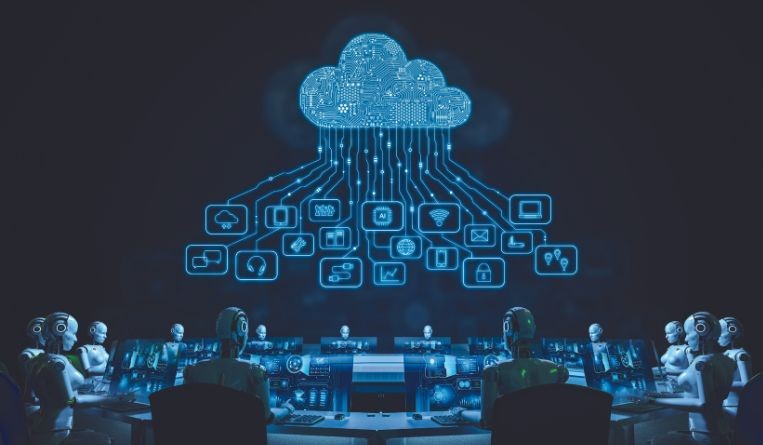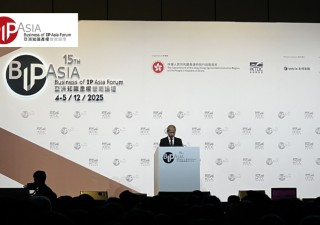Deepfake technology: Can you spot the difference?
30 April 2022

Deepfake technology isn’t just for the dark corners of the internet anymore. With the support of social media, apps that encourage everyone to convincingly copy the faces – and voices – of pop stars and celebrities, or even ordinary people, have become increasingly common.
Labeled as a major threat due to their growing variety, fake audio and video material can be used in criminal activity ranging from discrediting a public figure to impersonating someone else to gain access to their bank account. With the advent of deepfake and synthetic AI-enabled technologies, it is getting easier for fraudsters to create authentic live photographs or videos of individuals in order to commit serious fraud using these synthetic identities.
This especially rings true nowadays, especially as some countries have advocated, or are now advocating, facial recognition at bank machines in lieu of ATM cards.
“Deepfake technology poses a number of interesting legal and ethical questions,” says Jenni Rutter, a partner at Dentons Kensington Swan in Auckland. “In short, deepfakes are made using artificial intelligence software that can learn movements and sounds and then combine them in a realistic way. As the technology evolves, the more complicated the ethical issues become.”
Rutter outlines three questions that deepfake technology faces.
“First, it becomes harder to distinguish between reality and fiction, meaning video content can easily mislead and deceive, and viewers may lose trust in it. Second, as technology improves, less source material is needed to make a convincing deepfake. In the past, users needed significant source content for an AI program to learn from so only those with sizable media profiles like Barack Obama, Kim Kardashian and the like, were prospective targets. As the technology improves, less content is needed. This broadens the pool of potential targets to include those with limited online presence. Third, the technology is becoming more accessible to everyday users, meaning there are less barriers to creating a convincing deepfake. To complicate the picture, those who create deepfake content are frequently labelled as malicious but that is not always the case. Some creators suggest their content should be protected through freedom of expression or fair use principles, and that their rights should be fairly balanced against the rights of the individuals depicted in the content.”
-content_x-large.jpg)
Societal and governmental consequences
When it comes to legal issues, Nadia Ormiston, an associate at Dentons Kensington Swan in Auckland, says, there are a number of challenges for individuals seeking to stop the spread of content that they never authorized, let alone participated in.
“Those affected have looked to copyright law, but for a claim of infringement to be made out the source content must be borrowed from one (or several) copyright works,” she says, “Enforcement usually requires the buy-in of the copyright owner, who is not always the person depicted in the copyright work. Even when a copyright claim can be made out, fair use and other exceptions may provide the content creator with a defence. Image rights (in countries where these are recognized) may protect those with an image to protect, but will not assist the average private person. Other possible angles include privacy and defamation, but such rights are not well developed in all countries.”
This is supported by Manh-Hung Tran, country managing partner at BMVN in Hanoi, the Vietnam member of Baker McKenzie, who says that from a legal perspective, deepfakes trigger a serious risk of fraudulent evidence submission.
“Judges and attorneys will now have to decide how to manage deepfake evidence and authenticate it,” he says. “Individual rights’ under copyright and privacy laws will be in harm’s way as well since most deepfakes are created on a non-consensual basis. Enforcement actions against deepfakes are challenging as it is very difficult to trace and identify the creators of deepfakes.”
One of the most common use cases of this technology is in pornography.
“New websites dedicated to deepfake pornography have emerged where internet users can easily find erotic videos of their favorite celebrities or even of their personal contacts,” Tran says. “From there, deepfakes have started to expand to the political sphere. Several deepfake videos featuring political figures have gone viral, such as a video of Obama using an expletive to describe Trump. Though those videos are made for entertainment and educational purposes, they already receive a lot of attention from the public. If such videos are created and specifically dedicated to wreaking havoc on democracy, the potential harm will be unfathomable.”
In spite of these consequences, however, Ormiston adds that this technology also offers positive opportunities for those willing to embrace it.
“Commercial licensing of a ‘likeness’ could provide a way for studios to create content without the need for participation in the traditional sense – a possible boon in our pandemic world,” she says. “The software has also been harnessed by some companies to create AI-generated sales and customer services representatives and chatbots based on real individuals, as well as good old-fashioned entertaining content. As long as there is permission, there are valid uses for the software.”
-content_x-large.jpg)
Limiting exposure to deepfake technology
Naturally, to avoid getting into the trap, the first step to do is to limit exposure to being featured in a deepfake video. Sonia Ong, a partner at Wong & Partners, the Baker Mackenzie member firm in Kuala Lumpur, says that one should be cautious about the content (particularly videos and photos) posted online, especially social media.
“Where possible, ensure private accounts are used and privacy settings reviewed periodically to ensure desired circulation lists are in place; in any event, one should limit the number of photos and videos one shares on social media given that deepfakes thrive on larger sample sizes,” she says. “In particular, posting images from one’s younger days feeds the AI algorithms operating behind-the-scenes with richer content to develop more convincing deepfakes (by learning how one ages), and should also be avoided or limited.”
She adds that, understandably, celebrities and public figures will find the measures above challenging given that social media platforms have become key drivers for personal brand promotion and publicity, and require an active presence to build a following. In such case, she says, the risk of deepfakes will need to be assessed against the PR benefits of the personality’s social media strategy.
“There is also the risk of the general public being manipulated into believing that deepfakes are genuine,” she says. “Ultimately, efforts to educate online users about the dangers of deepfakes are key and will raise consciousness of detecting misinformation circulating on the web. Technological measures such as meta-tagging and watermarking genuine images and videos may also help demonstrate authenticity to some extent.”
Gabriela Kennedy, partner and co-chair of the IP practice and head of the Asia IP & TMT group at Mayer Brown in Hong Kong, adds that given that the creation of deepfakes relies on source images of the victim which are fed through the artificial intelligence algorithms, the best way to limit exposure to the risk of deepfakes is to limit and control the amount of personal content that is shared online, especially content that is viewable by the general public.
“The simplest way to do this is through strict control of the privacy settings for all social media accounts, in order to limit what is actually exposed to the public,” she says. “This includes awareness of what friends and family may post of you, which may not be subject to the same privacy settings. This is particularly poignant in light of recent cases of data scraping of platforms such as LinkedIn and Facebook, where huge amounts of data (potentially including personal data through which an individual may be identified) that was open to public viewing was scraped from those platforms and improperly made available for sale. If an individual’s photos and videos are open to public viewing, they may be similarly susceptible to scraping, potentially providing deepfakes creators with the necessary source materials.”
According to Kennedy, it is also crucial to ensure that proper security is put in place when transferring and storing data, especially when using online storage systems, given that such systems may be susceptible to hacking or be compromised through phishing tactics. She adds that complex and individual passwords should also be used for each account, which should never be shared with anyone.
“For celebrities, the ability to limit exposure to the risk of deepfakes is fraught with difficulties, as photos and videos of them are more likely to be taken and shared without their consent by paparazzi and fans alike,” she says. “However, the measures described above should still be employed by celebrities as far as possible, to reduce the risk of personal photos and videos being publicly available and potentially being manipulated using deepfake technology.”
Tran says that, indeed, it would be very challenging (if not possible) for celebrities to limit their appearance exposure to the mass media.
“As they develop their personal brands or enter into promotional deals and sponsorships, their images are widely spread and can easily be searched online,” he says. “Therefore, to protect their images, celebrities may need to be proactive in monitoring the internet and take necessary legal actions to take down any presence of their deepfakes as soon as they are online.”
-content_x-large.jpg)
Laws of protection
If deepfake technology, however, has been committed, there are some laws which can help.
While Malaysian laws do not specifically address deepfakes, the following may provide some relief to those who are faced with manipulated content: The Communications and Multimedia Act 1998 and the Content Code established thereunder prohibit the communication / dissemination of indecent, obscene, false, menacing or offensive content; Copyright Act 1987 if the deepfake uses part of their original work.
More recently, the Malaysian Government gazetted the Emergency (Essential Powers) (No.2) Ordinance 2021 to tackle fake news, effective March 12, 2021. The ordinance has extra-territorial application and makes it an offence to create, publish or distribute “fake news,” which has been broadly defined to include not only news relating to the pandemic or the emergency declared in Malaysia but potentially any content deemed fake. The ordinance also mandates 24-hour take down of offending publications, and grants authorities wide powers to access computerized and communications traffic data.
In Vietnam, the current framework sets out general bases for individuals to protect their rights. As deepfakes (and deep voice) encompass elements of a person’s features and potentially copyrighted materials such as videos or images, the main legal bases to deal with these issues are privacy laws and intellectual property laws. Article 32 of the Civil Code grants an individual rights in relation to his/her images – the use of images of an individual must be consented to by the subject individual, except in certain cases concerning the national or public benefits.
Vietnam is also in the process of drafting and getting the public’s opinion on the Personal Data Protection Decree (PDPD), the first-ever comprehensive legal instrument regulating data protection that is in line with international standards. PDPD, once passed, will be one of the key legal bases to address issues arising from deepfakes. Vietnamese laws provide for civil remedies and administrative and criminal sanctions against acts of distorting, slandering, or offending the prestige of organizations or the honor and dignity of individuals.
In Hong Kong, there is currently no legislative framework that specifically targets audiovisual manipulation or deepfakes. Unfortunately, the right to privacy is not formally recognized at common law and the tort of invasion of privacy is not available between private individuals. Nevertheless, there are some tools offered by the existing law that may be drawn upon to outlaw pernicious deepfakes.
-content_x-large.jpg)
“A victim of deepfakes may be entitled to have the forged content removed from social media platforms pursuant to a copyright infringement claim,” says Kennedy. “However, only the copyright owner has the right to sue for copyright infringement, which means that an individual has no actionable claim if his or her photograph is taken by another person and subsequently published by them.”
Deepfakes may also fall within the scope of fair dealing exceptions under the Copyright Ordinance.
“The use of personal data in creating deepfakes may also trigger the relevant provisions under the Personal Data (Privacy) Ordinance (Cap. 486),” she says. “Personal data is defined as any data relating directly or indirectly to a living individual from which it is practicable to ascertain the identity of the individual, in a form in which access to or processing of the data is practical. If the material at stake uses and processes an individual’s personal data, the data user may be in breach of compliance requirements under the ordinance.”
-content_x-large.jpg)
Alternatively, if the synthetic content amounts to defamatory material that damages the reputation of another, the publisher could be liable for defamation.
“At this point, we do not know how these rules can be applied to cases involving inappropriate AI-generated content,” she says,
In New Zealand, the law is not set up to deal with deepfakes specifically, but there are some avenues for recourse within its existing framework.
“The usual takedown requests to platforms are available, and would normally be the first port of call,” says Rutter. “Our Harmful Digital Communications Act 2015 is available to address online harms. It would be appropriate for the victim of a malicious deepfake to make a complaint under this legislation.”
She adds: “Relying on copyright law will be challenging due to the need to rely on identifiable copyright works. Creating a deepfake takes several, if not hundreds, of different voice or image samples that could be taken from many different works. Once deepfake content is generated, it may be impossible to identify an underlying copyright work let alone prove copying of a substantial part. However, there is no general fair use defence to copyright infringement in New Zealand, and no defence for parody or satire. There are however exceptions to infringement, such as fair dealing for the purpose of criticism, review and news reporting. Image rights are not expressly protected in New Zealand. The law of passing off and our Fair Trading Act 1986 can be relied on to try and prevent false endorsement. The Defamation Act 1992 may also provide recourse where the content damages an individual’s reputation.”
The challenge continues
While deepfake technology poses all of these concerns and solutions, the challenge continues in combating such an ill platform.
Ong says that while many popular social media companies and websites have officially banned deepfakes from their platforms, and rolled out various tech solutions to counter such content including AI analytics to identify synthetic media, fact checking tools, content monitoring tools and digital authentication, yet there remain challenges in effective identification, moderation and removal of such content.
“Ever-advancing technology means deepfakes look more and more genuine and are becoming even harder to spot. This is often a labour-intensive and time-consuming process which social media platforms may not be willing to invest in unless mandated by law,” she says. “Platforms are also hesitant to play judge as to what is seemingly acceptable to uphold principles of free speech. Further, studies show that the spread of novel and entertaining content, even where false, is more likely to be shared. Given the vastness of the web, it is usually difficult to trace the actual reach of the deepfake.”
Excel Dyquiangco






